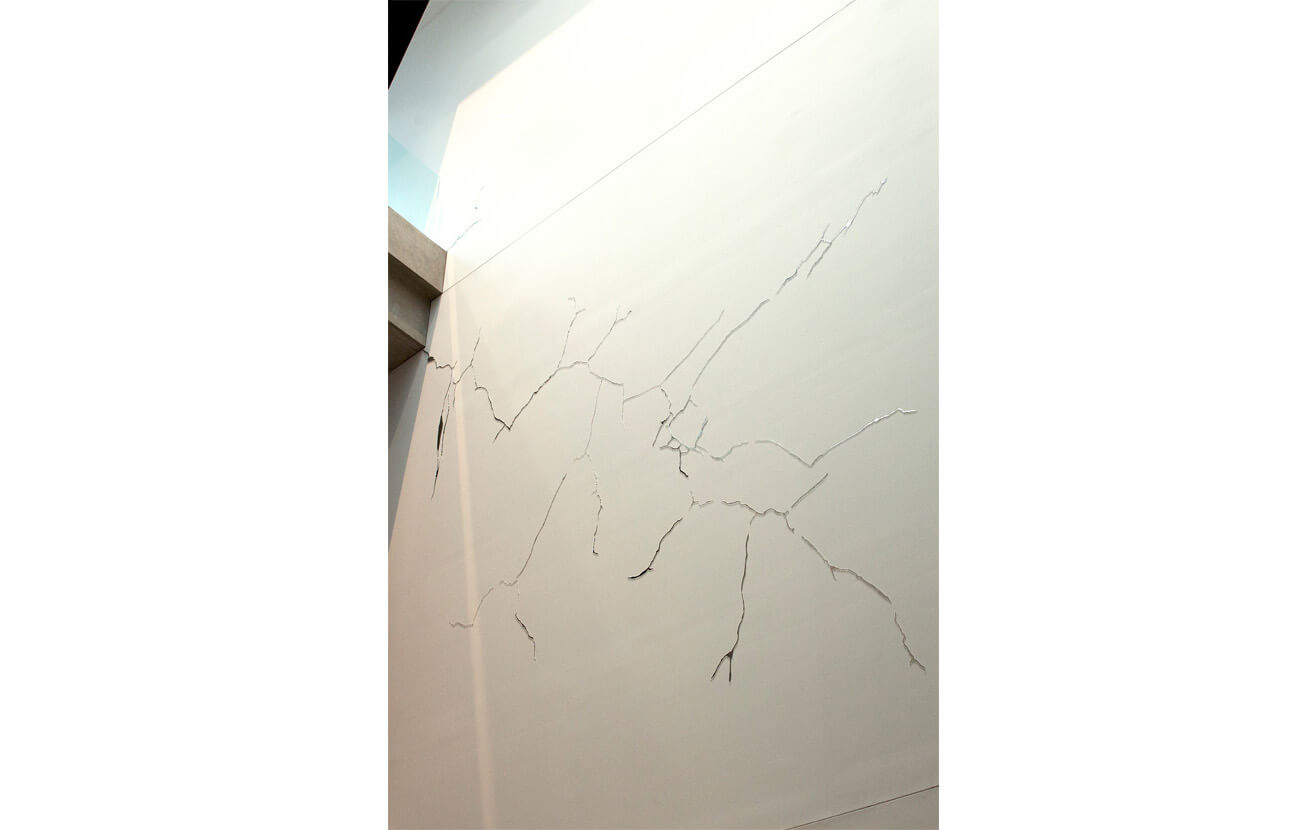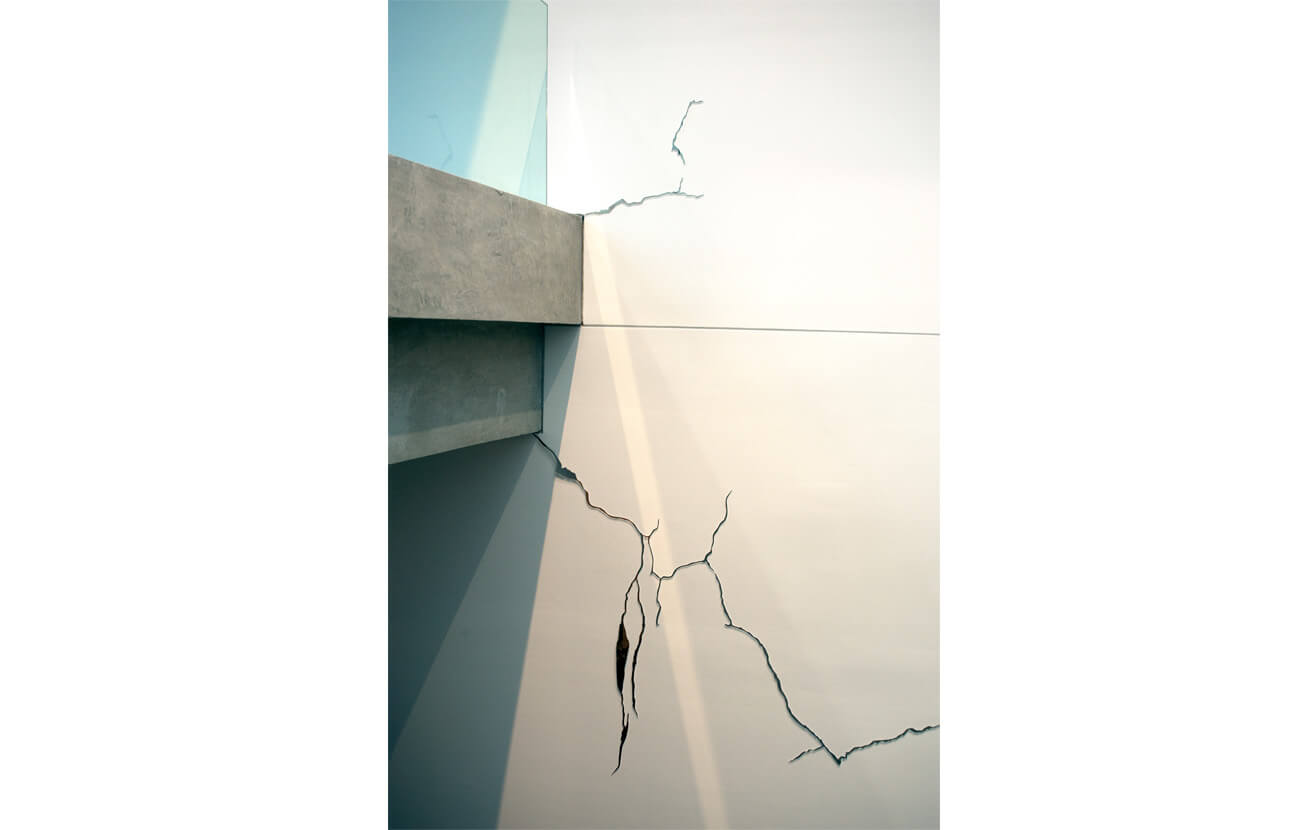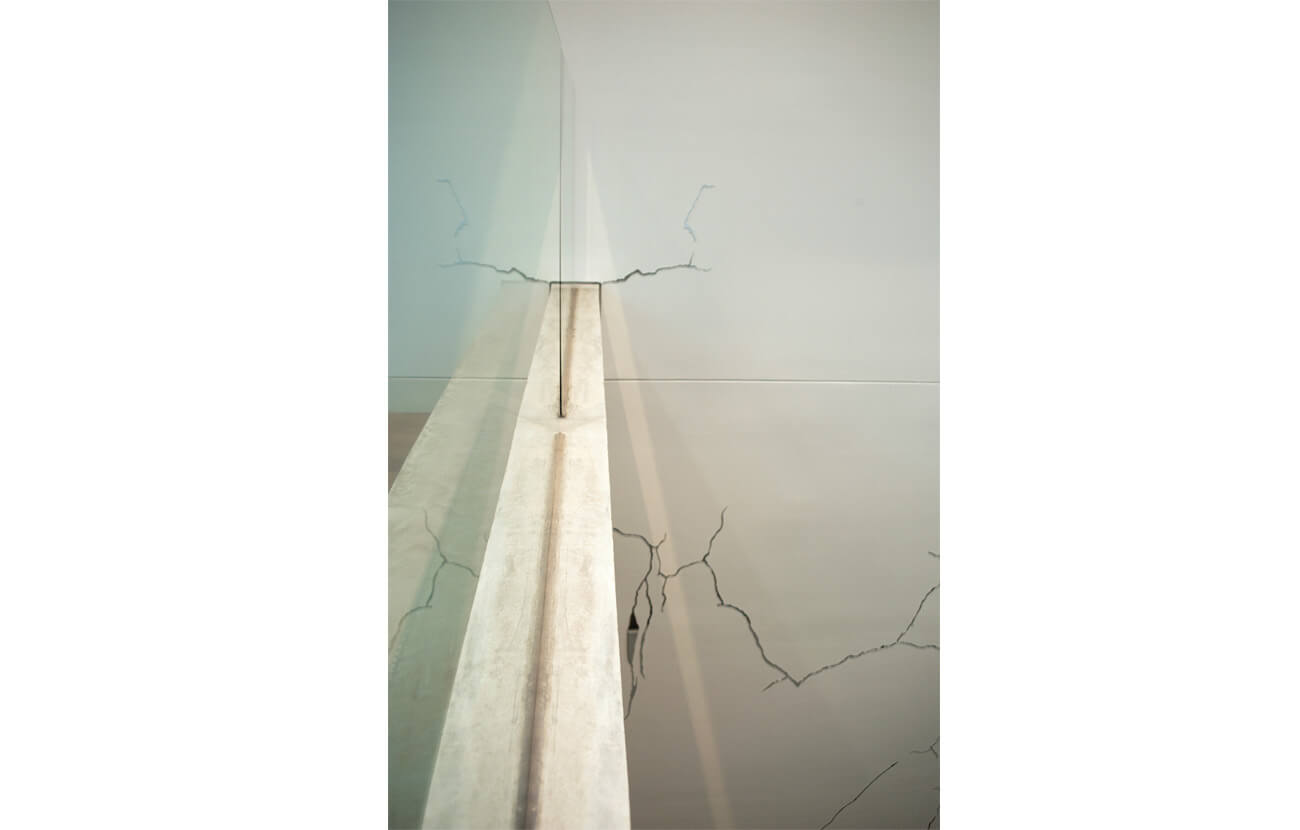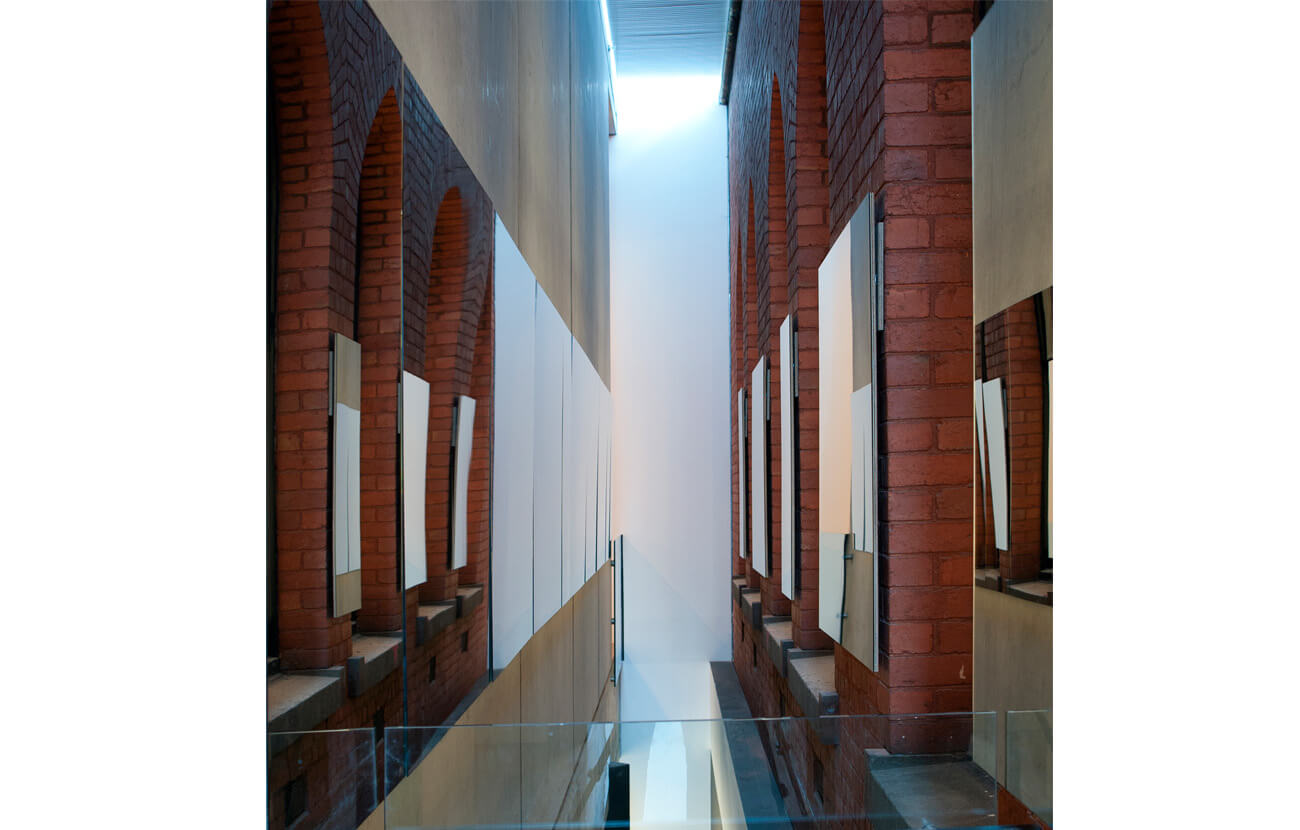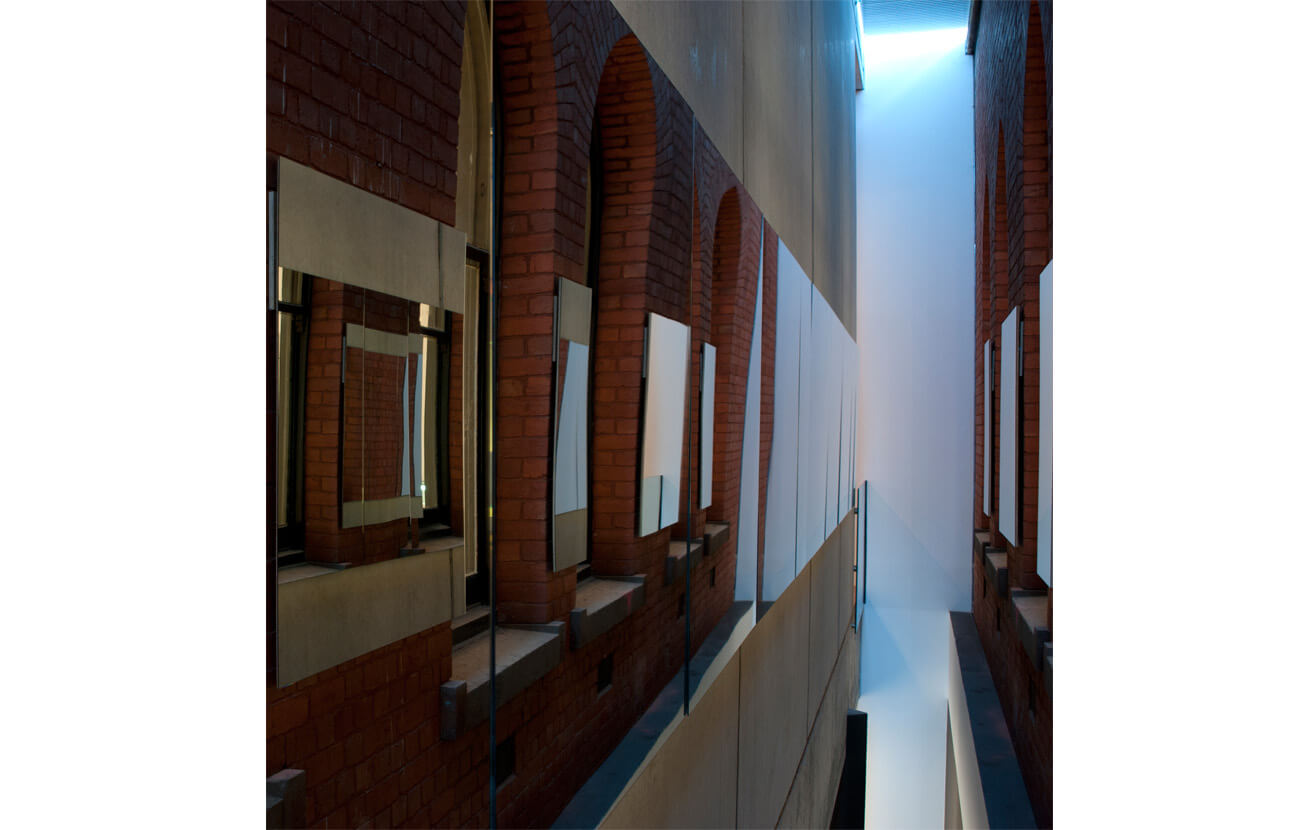Footnote (Mirror 1)
2012
acrylic mirror, pins
dimensions variable
(amongst several in situ interventions, part of the solo exhibition titled ‘Circa’ at Ian Potter Museum of Art, Melbourne)
Footnote (Mirror 1)
A series of cracks rendered in thin mirrors appears on the main wall in the entrance of the museum. Like a footnote or postscript, these fissures reflect the building back onto itself by reorientating visual and perspectival possibilities. Reminiscent of crevices, mirrored arteries visually resemble the filigree markings on maps of India displayed in the Classics and Archaeology Gallery. Kallat’s wall fissures allow the building to become self-reflexive while the title furthers ongoing linguistic associations.
Footnote (Mirror 2)
Between the brick 1920s architecture of the Classics and Archaeology Gallery and the abutting contemporary wing, Kallat has placed a row of mirrors like a recursive corridor. Once again the museum reflects back on itself so that the contemporary segues with the classical. For Kallat, these non-spaces between galleries resonate with possibilities. By activating peripheral and threshold zones, Kallat’s mirrored corridor of infinity holds innumerable reflections and viewpoints.
Natalie King (excerpt from the essay: An Evolving Narrative in 8 Acts, Circa, Ian Potter Museum)
